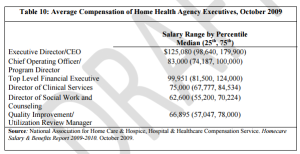Home Care Start
The history of home care is a long one. For thousands of years, the responsibility of caring for an older person has fallen to family and local communities. But as life expectancy has increased, additional private caregivers are needed. Today, 1 in 5 over the age of 85 receive formal home care. In addition, the demand for private caregiver services is fueled by the 73 million baby boomers.
Before the Industrial Revolution, people often lived in the same community. This led to strong ties with neighbors and a settled way of life. However, poverty was a problem. Women were more likely to take care of their elderly neighbours. They also often had daughters who stayed at home care of their parents. During the Victorian era, life expectancy was shorter. Many diseases were contagious and were considered dangerous. To prevent the spread of disease, district nurses were introduced.

Visiting nursing began in England in the mid-1800s. A school for training visiting nurses was established by Florence Nightingale. Nurses were hired to visit sick individuals and teach the public. The visiting nurse associations used modest philanthropic donations to fund their work.
When Did Home Care Start?
The establishment of hospitals in the early 1900s shifted the locus of care for acutely ill patients. Eventually, hospitals assumed responsibility for care for chronically ill patients as well.
During World War II, the shortage of nurses in the United States caused many home care agencies to close. In addition, the National Assistance Act in 1948 required local authorities to provide care for anyone who could not afford to pay for it.
Throughout the 20th century, many programs were launched to expand the availability of home care. These included Medicaid, Medicare, and the Old Age Assistance program. Each program has different eligibility requirements and reimbursement systems.
While some programs are financed by the federal government, most are funded through state and local government. The programs are designed to meet the needs of specific populations. Some, such as the Medicaid program, are available to low-income and at-risk people. Other programs offer support for people with disabilities.
Although some programs cover a limited amount of care, they may be helpful for those who need assistance recovering from illness, surgery, or injury. Many patients need help with ambulation, medication reminders, and other activities of daily living. Others require help with purchasing food and managing their finances.
As more people become chronically ill, the need for skilled home health care is increasing. Currently, a wide variety of technology is used to help patients with their care. Prosthetic devices, adaptive equipment, and other items are necessary for those with chronic conditions. There are also numerous government and private insurance programs.
Until the 1960s, Medicare coverage was only provided for people who were acutely ill. Home care was not covered for people with chronic conditions. At the time, the argument for providing home care was that it was cheaper than hospital care and would allow patients to remain in their homes.